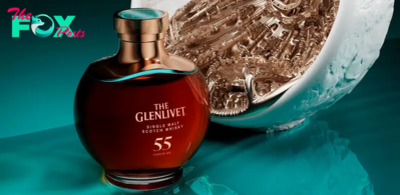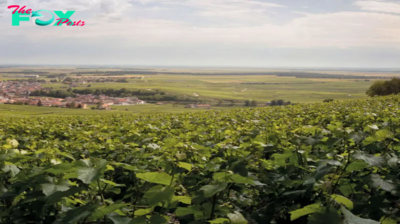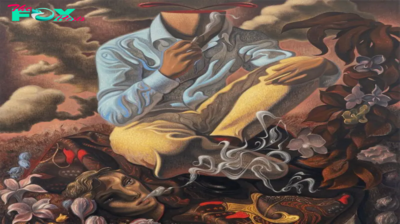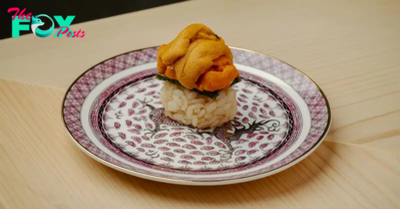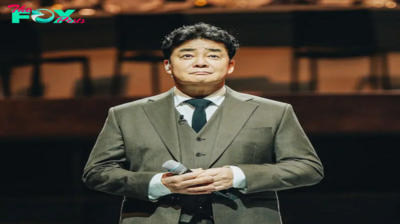Lifestyle
The 2024 Bangkok Art Biennale Transforms the City Into an Urban Artscape
The fourth edition of the Bangkok Art Biennale in 2024 – due to launch on October 24 – will showcase a diverse range of artistic expression, from both established and emerging artists and collectives, across 11 different venues.
(Hero image: ‘Eye of Newt’ by Bruce Asbestos, Bluecoat Gallery (Feb 2022) ©Rob Battersby)

Venice has the ‘La Biennale di Venezia’, London has its Frieze Art Fair, New York has its annual Armory Show, and the sleepy Swiss city of Basel gave rise to Art Basel, which now has iterations in Miami, Hong Kong, and Paris. In the contemporary art world, events such as these underscore the fact that certain cities are “epicentres” – not only for artists, but also dealers and collectors.

Making its way up this illustrious city list is Bangkok, which has been presenting – since its inception in 2018 – the Bangkok Art Biennale (BAB). Over the years it has grown into one of the preeminent art events in the region, with a scale and scope unmatched by any of its ASEAN neighbours. The 4th iteration of BAB is scheduled to begin on October 24 (continuing until February 25, 2025), and this time around the lineup of talent, both homegrown and international, is exceptional.

In total, this year’s event will showcase 76 artists, representing 39 countries, across 11 downtown venues. The theme this time around is ‘Nurture Gaia’, which will steer the conversation towards such vital contemporary issues as anthropology, collectivism, ecology, feminism, and the Politics of time and place. Some of the more recognisable names on display include Anish Kapoor, Joseph Beuys, Tony Cragg, Adel Abdessemed, and Louise Bourgeois (best known for her giant spider sculptures).

Also garnering plenty of attention are UK artists Agi Haines (who explores the profound implications of futuristic body modifications) and Bruce Asbestos (famous for his eye-popping inflatable works), as well as Italian artist Chiara Camoni. Asia’s cutting-edge creatives are also well represented, including Tokyo-based artist Aki Inomata, who investigates the relationships between animals and human beings and the “art” that emerges from them, and Singapore-based Priyageetha Dia, who works with time-based media and installations. Closer to home, Nakrob Moonmanas, Thavika Savangwongsakul, Pimdao “Mutmee” Panichsamai, and Sophirat Muangkhum are just four of the more than 20 Thai artists participating.

To even attempt to see the entirety of the BAB one must approach it in steps, and with this idea in mind the organisers have created a ‘River Route’ and a ‘City Route’. The stops along the city’s Chao Phraya River include four temples – Wat Arun, Wat Pho, Wat Prayoon, and the newly added Wat Bowon Niwet Ratcha warawihan – as well as Museum Siam, the National Gallery of Thailand, and the National Museum Bangkok (the latter two being new venues for 2024). The city circuit, by contrast, includes the prestigious Bangkok Art and Culture Centre (BACC), plus a trio of commercial venues: Central World shopping mall; the BAB Box at the Queen Sirikit National Convention Center; and One Bangkok, a brand-new mixed-use development in the central Business district.

So… where to begin? To get some insider insights I reached out to Dr. Brian Curtin, one of five distinguished members of this year’s curatorial team (which also includes: Prof. Dr. Apinan Poshyananda, the Chief Executive and Artistic Director of the BAB; Dr. Paramaporn Sirikulchayanont; Pojai Akratanakul; and Akiko Miki). Born in Ireland but based in Bangkok for over two decades, Brian is the author of Essential Desires: Contemporary Art in Thailand (published in 2021), and currently teaches full-time in the Communication Design programme at Chulalongkorn University.
“Based on previous editions of the biennale, and also my own interests, I wanted artists who would do quite subtle work, rather than making statements about how bad the world is,” he explains when asked about who he chose to bring to this year’s biennale, and why.

“I wanted artists who could maybe offer alternative resources for thinking about the world. So, for example, we have American artist Jessica Segall, who trained herself to swim underwater with alligators, and tigers, and other predators. In certain parts of the USA, like Texas I think, people are allowed to legally own these wild Animals, and it’s an extremely macho scene. Jessica was interested in commenting on that in her videos, so she’s wearing red nail varnish and a highly feminine dress while underwater. Her piece will be shown on two video screens in the Sermon Hall at Wat Prayoon.”

Another artist Brian is bringing to the BAB is Susan Collins, from London, whom he mentions is “filming the Chao Phraya River for a year, 24 hours a day.” This immediately reminds me of the 1965 experimental film Empire, in which Andy Warhol filmed the Empire State Building for eight solid hours, and Brian agrees it’s an apt comparison.
“The idea, I think, is to simply slow down our relationship to the world and to think about all the things that we actually don’t notice, or don’t see. It’s got this highly digitalised look and the images themselves are very, very interesting. It’ll be shown on one of two monitors at the BACC, with the other monitor showing the Thames, in London, which Susan is also filming round-the-clock for a year.

“We’re also showing three prints from the film she made of the Jordanian mountains, which were shot from Jerusalem. And given what’s happening in that region at the moment, there’s something slightly disturbing about them. What I’d say about Susan’s work is that it does a lot by doing just a little. It slows you down and makes you think, ‘ What am I not seeing?’ But having said that, there are examples of illegal Israeli settlements visible in the shots.”
The next artist we discuss is George Bolster, an Irish artist who’s now based in New York. “He Traveled to a national park in the USA which is on the border with Mexico, and is often used as the backdrop in Hollywood Westerns. So, the imagery is, on the one hand, very familiar, because we’ve seen it countless times in movies. But it’s also a utopian space, because American and Mexican ranchers cross this border every day, so it’s not a big deal… although there are still police there, of course.

“Anyway, what George has done is make a huge circular Jacquard loom immersive tapestry, which is slightly frayed in parts and worn down, so it’s drawing our attention beyond the myth, beyond how we think about these places and what’s actually happening there. It will be shown at the BACC and there’s an accompanying film based on an article from Newsweek about what Trump did to rollback protections on national parks in the USA. He’s considered to be one of the most anti-nature presidents ever.”
Brian also mentions that although he’s not the curator for them, there are three other notable artists of Irish descent being shown at this year’s BAB – Kira O’Reilly, Aideen Barry, and Amanda Coogan, the latter of whom is a performance artist who grew up with deaf parents, and that plays a significant role in the piece she’ll be presenting (where she works with the deaf community in Bangkok).

Our conversation then turns to Mella Jaarsma, a Dutch artist based in Indonesia for whom Brian has found a place at the National Gallery. “Her piece is about retrieving the history of painted bark, and retrieving the history of using beaten bark as clothing. She’s building several costumes made of this soft bark, and painted on them will be the iconography of the local craftspeople. By putting them in an art gallery she’s hoping to reimbue them with some of their original value and power.”

Finally, on the subject of local Thai artists, it turns out that Brian is the curator for rising star Supawich Weesapen, who was a featured artist at this year’s Frieze Seoul and also Art Jakarta. “His aesthetics are so subtle and so Mysterious you could compare him to [film director] Apichatpong Weerasethakul. He’ll be showing in the National Gallery. It’s an installation with large paintings.”
Another Thai artist to watch for, according to Brian, is the photographer Pokchat Worasub, whose pieces will also be shown at the National Gallery. “She’s quite an interesting one because she shows female bodies and female sexuality in a more interesting and innovative and slightly queer way than is usually the case. And to have somebody doing this type of work, I think, is important.”
bkkartbiennale.com
-
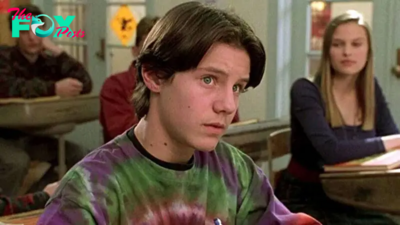
 Lifestyle1h ago
Lifestyle1h agoHocus Pocus star opens up on ‘beating’ Leonardo DiCaprio to role before quitting acting.Cau
-

 Lifestyle1h ago
Lifestyle1h agoInside Melania Trump’s modeling career from European start to American visa issues.Cau
-

 Lifestyle1h ago
Lifestyle1h agoA glimpse into Chaz Bono’s life: Cher faced challenges with his uniqueness
-

 Lifestyle1h ago
Lifestyle1h ago“I’m More Lips Than Human”, A Woman Struggles to Eat Due to Her Huge Lips but is Determined to Make Them Even Bigger
-
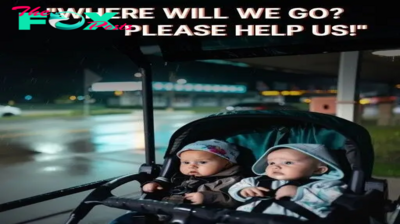
 Lifestyle1h ago
Lifestyle1h agoNew Father Kicks Wife With Newborn Twins onto the Streets, Years Later He Begs Her for Help
-

 Lifestyle1h ago
Lifestyle1h agoA Note from the Delivery Guy Made Me Install Security Cameras around My House, I will Forever Be Grateful to Him
-

 Lifestyle2h ago
Lifestyle2h agoAlizeh Shah takes stand against online critics, embraces self-expression | The Express Tribune
-
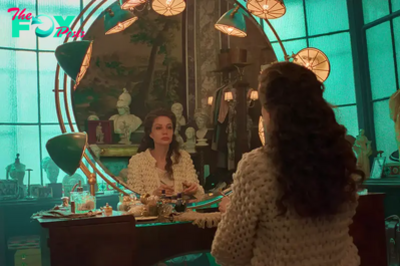
 Lifestyle6h ago
Lifestyle6h agoAngelina Jolie Shines as Opera Icon Maria Callas in Moving New Trailer for Maria.Linh
